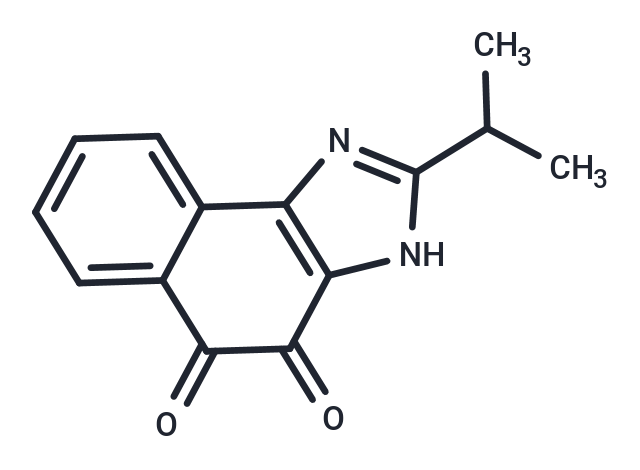Shopping Cart
- Remove All
 Your shopping cart is currently empty
Your shopping cart is currently empty

KL1333 (NQO1 activator 1) enhances energy metabolism and mitochondrial dysfunction in MELAS fibroblasts. Elevated NAD+ levels trigger the activation of SIRT1 and AMPK, and subsequently activates PGC-1α. NQO1 activator 1 is an orally available NAD+ modulator. It reacts with NAD(P)H: NQO1 as a substrate, resulting in increases in intracellular NAD+ levels via NADH oxidation.

| Pack Size | Price | Availability | Quantity |
|---|---|---|---|
| 1 mg | $95 | In Stock | |
| 5 mg | $192 | In Stock | |
| 10 mg | $289 | In Stock | |
| 25 mg | $523 | In Stock | |
| 50 mg | $787 | In Stock | |
| 100 mg | $1,070 | In Stock | |
| 1 mL x 10 mM (in DMSO) | $253 | In Stock |
| Description | KL1333 (NQO1 activator 1) enhances energy metabolism and mitochondrial dysfunction in MELAS fibroblasts. Elevated NAD+ levels trigger the activation of SIRT1 and AMPK, and subsequently activates PGC-1α. NQO1 activator 1 is an orally available NAD+ modulator. It reacts with NAD(P)H: NQO1 as a substrate, resulting in increases in intracellular NAD+ levels via NADH oxidation. |
| Alias | NQO1 activator 1 |
| Molecular Weight | 240.26 |
| Formula | C14H12N2O2 |
| Cas No. | 1800405-30-4 |
| Smiles | CC(C)c1nc-2c([nH]1)C(=O)C(=O)c1ccccc-21 |
| Relative Density. | 1.329 g/cm3 (Predicted) |
| Storage | Powder: -20°C for 3 years | In solvent: -80°C for 1 year | Shipping with blue ice. | |||||||||||||||||||||||||||||||||||
| Solubility Information | DMSO: 245 mg/mL (1019.73 mM), Sonication is recommended. | |||||||||||||||||||||||||||||||||||
Solution Preparation Table | ||||||||||||||||||||||||||||||||||||
DMSO
| ||||||||||||||||||||||||||||||||||||

Copyright © 2015-2025 TargetMol Chemicals Inc. All Rights Reserved.